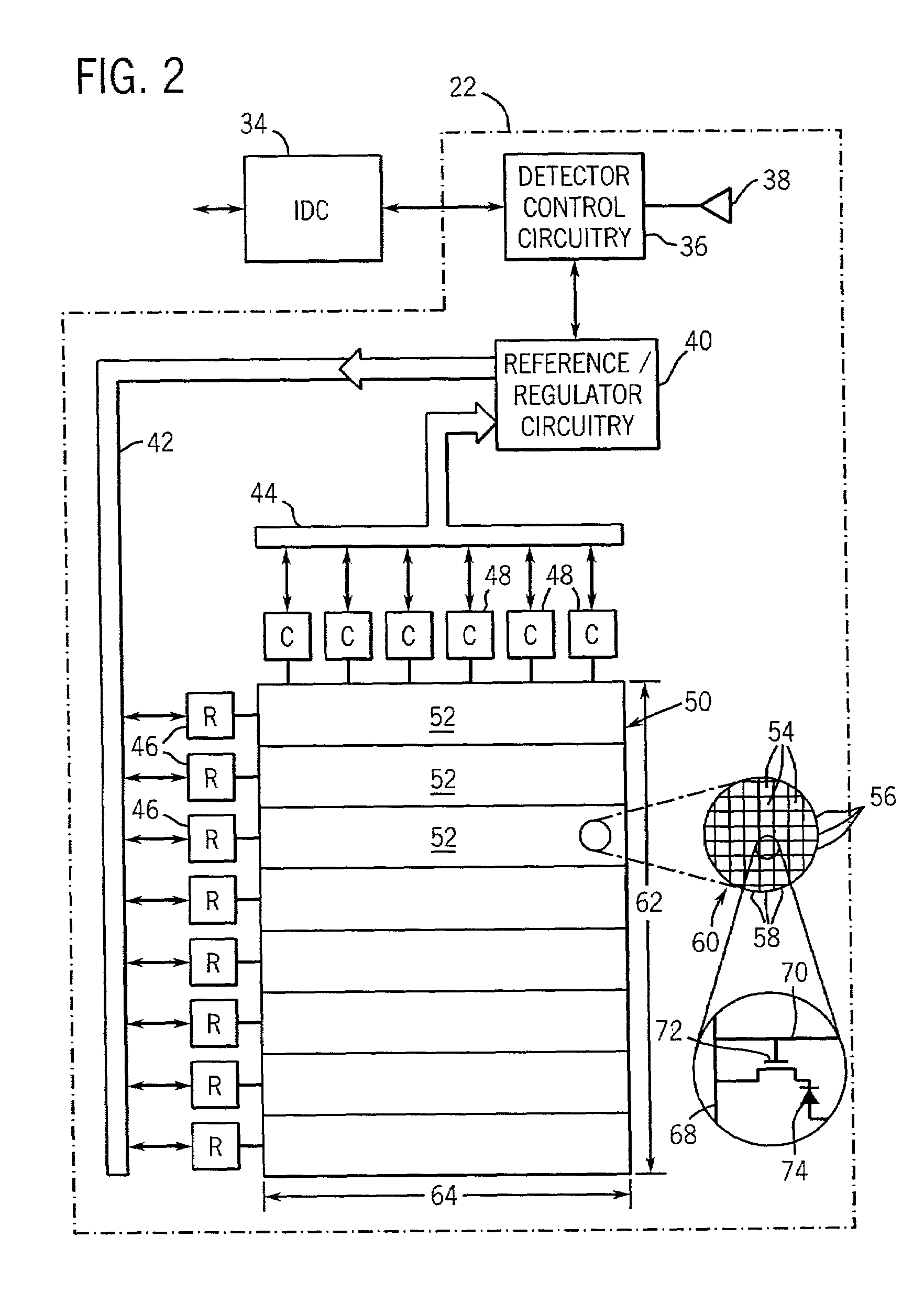Automatic selection of the log-subtraction decomposition parameters for dual energy chest radiography
- Summary
- Abstract
- Description
- Claims
- Application Information
AI Technical Summary
Benefits of technology
Problems solved by technology
Method used
Image
Examples
Embodiment Construction
[0023]FIG. 1 illustrates diagrammatically an imaging system 10 for acquiring and processing discrete pixel image data. In the illustrated embodiment, system 10 is a digital X-ray system designed both to acquire original image data and to process the image data for display in accordance with the present technique. For example, the system 10 may acquire multiple images of a desired anatomy over a short time interval for comparison and processing, such as high and low-energy image exposures used for a dual-energy decomposition system. Accordingly, the system 10 may embody a dual-energy digital X-ray system, which is operable to decompose high and low-energy image exposures into soft tissue and bone images for further analysis of the desired anatomy. In the embodiment illustrated in FIG. 1, imaging system 10 includes a source of X-ray radiation 12 positioned adjacent to a collimator 14. Collimator 14 permits a stream of radiation 16 to pass into a region in which a subject, such as a hu...
PUM
 Login to View More
Login to View More Abstract
Description
Claims
Application Information
 Login to View More
Login to View More - R&D
- Intellectual Property
- Life Sciences
- Materials
- Tech Scout
- Unparalleled Data Quality
- Higher Quality Content
- 60% Fewer Hallucinations
Browse by: Latest US Patents, China's latest patents, Technical Efficacy Thesaurus, Application Domain, Technology Topic, Popular Technical Reports.
© 2025 PatSnap. All rights reserved.Legal|Privacy policy|Modern Slavery Act Transparency Statement|Sitemap|About US| Contact US: help@patsnap.com



